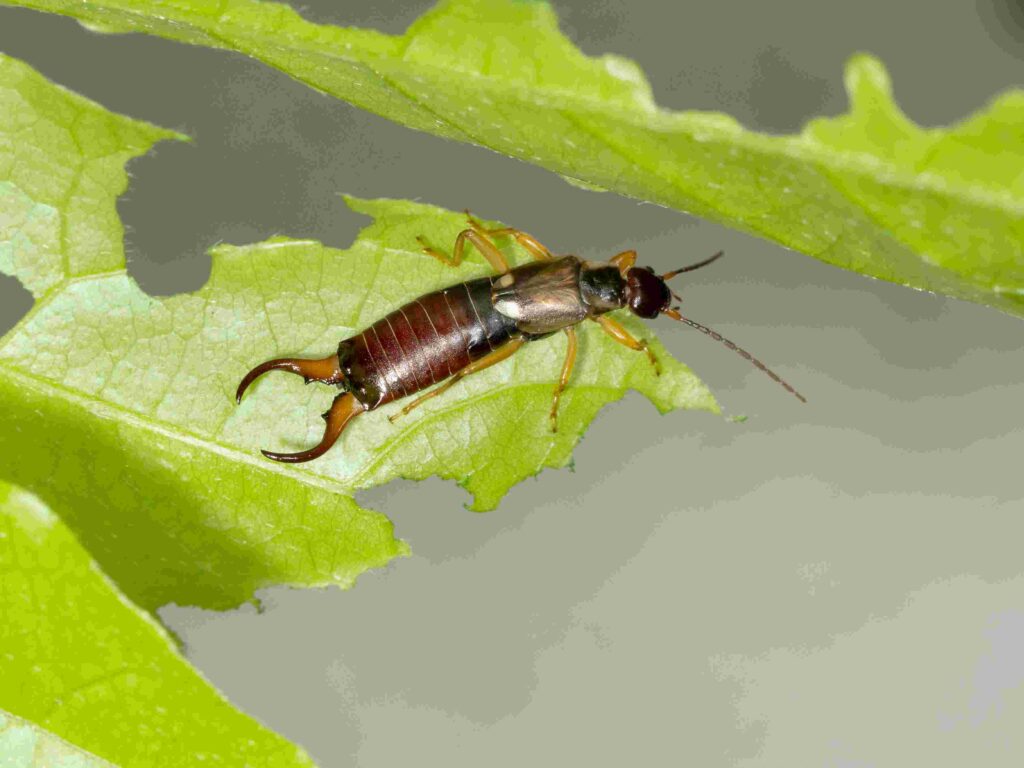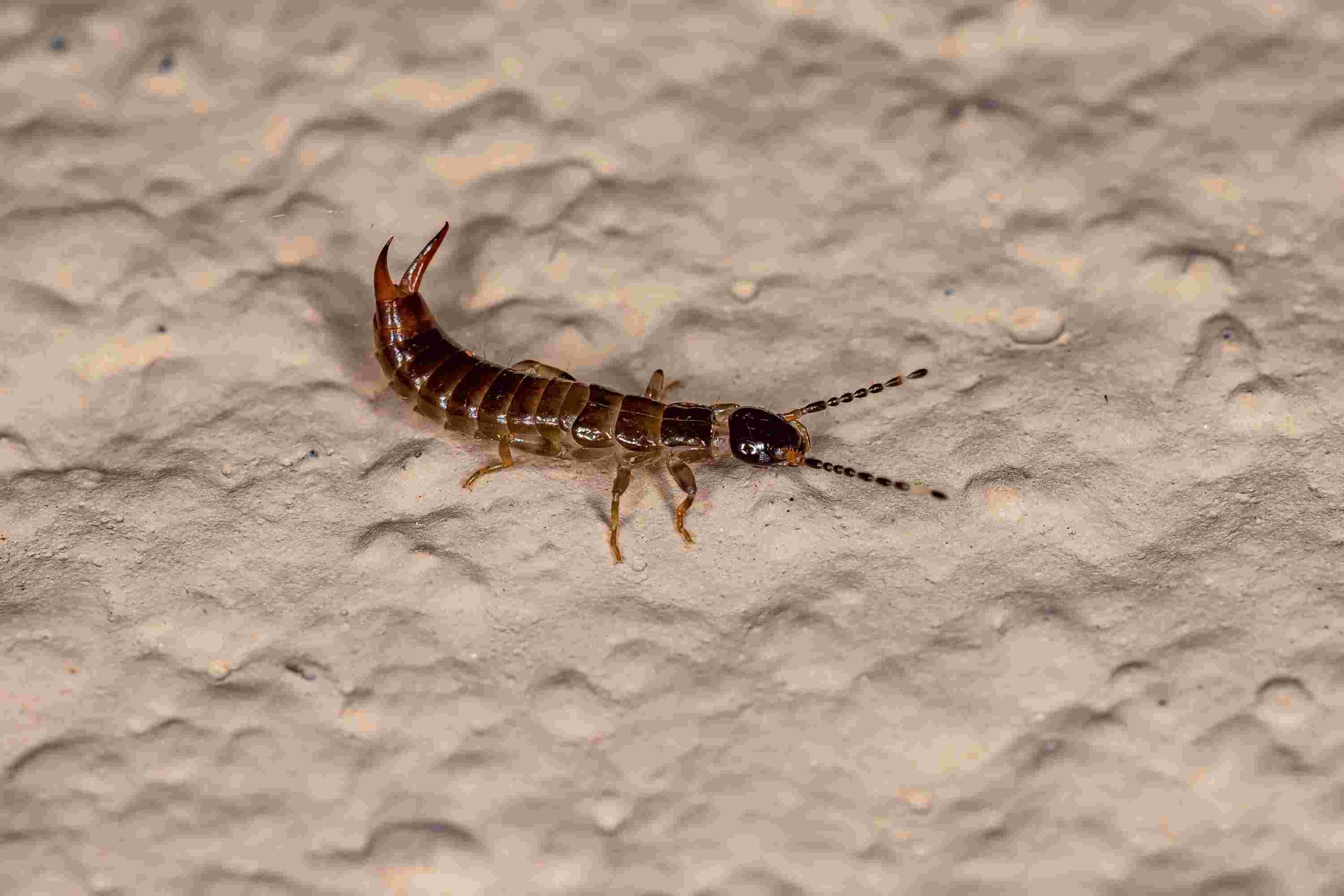Although earwig infestations are often out of sight, the damage they cause can be as clear as day. From damaged plants to foul odors, earwigs are a constant headache homeowners should avoid at all costs.
If you suspect you have an earwig problem, let our team at Dewey Pest and Termite Control provide information about earwig infestations and practical ways to keep them at bay.
What Are Earwigs?
Earwigs are small insects that commonly live in dark, moist outdoor environments. They get their namesake from an old myth claiming they crawl into people’s ears as they sleep. While this is thankfully false, they cause a wide range of problems for homeowners nationwide—especially in gardens.
What Does an Earwig Look Like?
To identify an earwig, look for its forceps near its backend. Their forceps are often used for defense and are curved for males while flat for females. The adult earwig is typically three-quarters of an inch and reddish-brown. Most species are winged and have hard wing covers. Look out for immature earwigs, which are smaller and don’t have fully developed wings yet.
Are Earwigs Dangerous?
If you look up earwig images, the sheer sight of this bug is enough to send shivers down your spine. In reality, earwigs are harmless to humans. They aren’t venomous and don’t transmit diseases. Your houseplants and garden aren’t as fortunate, however. Earwigs can jump a short distance to navigate your yard and target plants to feed on.
Five Signs of an Earwig Infestation
While they are most common in the fall and spring, an earwig problem can pop up in a household at any time. That’s why it’s essential to be on the lookout for any signs of an earwig problem at home. Allow us to show you five common earwig infestation signs to look out for:
1. Foul Smells

Earwigs often emit a foul-smelling, brown liquid as a defense mechanism. If you step on or crush an earwig, this liquid will come out, and if not cleaned up immediately, the smell can linger. Next time you suspect a potential pest problem, be aware of any odd odors in the air.
2. Plant Damage
Earwigs are considered a garden pest because they feed on a variety of plants and crops. Signs of an earwig feeding on your plants are irregular holes in leaves and flower blossoms. That being said, if they manage to invade your home, you can count on them to chew their way through your house plants as well.
3. Half-Eaten Fruits and Vegetables
These pests also feed on fruits and vegetables throughout the garden or the fruit bowl in your kitchen. They prefer softer fruits that are easier to get into, such as berries, apricots, and peaches. Inspect your garden for holes in your fruit or chewed leaves.
4. Earwig Droppings and Shed Exoskeletons
After earwigs have their feast, they often leave behind droppings. Commonly called frass, these droppings look like tiny black pellets and are typically deposited near feeding sites on plants and fruits.
Additionally, earwigs continuously outgrow their skins and leave behind vacant exoskeletons. These skins often appear as small, see-through flakes, which are often found in areas frequented by earwigs.
5. Sightings in Outdoor Areas
The most telltale sign of an earwig problem is spotting a few out in your yard. They often make their homes in dark and damp places in your yard, such as grass, wood, and leaf litter. Those who don’t make it indoors by wintertime burrow underground and hibernate.
How To Remove Earwigs From Your Home

Have you noticed these common earwig signs pop up in your home? Whether it’s the heat of the summer or deep into winter, better your odds against earwigs with these simple preventive measures:
- Seal off any entry points
- Reduce moisture and leaks
- Remove piles of wood, leaves, and rocks
- Keep vegetation maintained to prevent overgrowth
- Store food away in sealed containers
- Utilize earwig traps
Even with these preventive measures, the best solution for treating earwigs is through professional pest control services from Dewey Pest and Termite Control. Once one of our skilled pest control professionals inspects your home and determines the extent of your earwig issue, they’ll determine a specialized treatment plan that will yield long-term results in earwig removal and prevention.
Frequently Asked Questions About Earwigs
Is an earwig bite common?
No, earwigs are not known to bite humans. While they’re not designed to attack, earwigs can use their forceps to grab onto objects.
Pincher bug versus earwig: what makes them different?
Pincher bugs and earwigs are the same bugs, and the two terms are used interchangeably. The name pincher bug was coined due to their forceps-like pinchers.
Do earwigs have wings?
Most earwigs do have wings, but they rarely use them. Although they can fly in short bursts, they are not the most graceful fliers and prefer to crawl.

